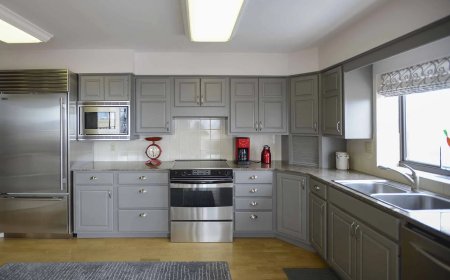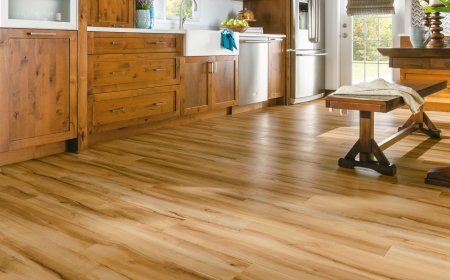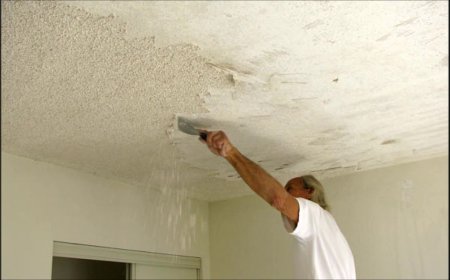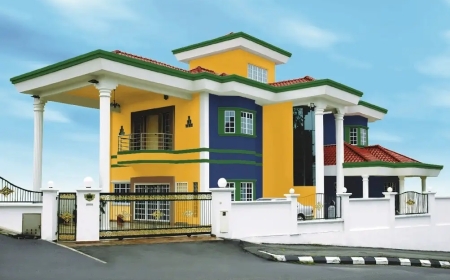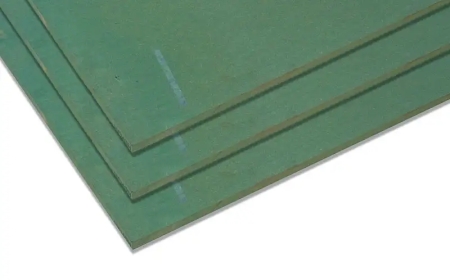Exterior Painting in Cold Weather: What You Need to Know
Learn how to paint your home’s exterior in cold weather. Tips and tricks for successful winter painting, including the best paint options.

When you think of exterior painting, you might picture warm summer days and sunny afternoons. But what if you need to paint your house in the cold weather? Cold weather painting presents unique challenges, but with the right approach, you can still achieve beautiful, lasting results. Whether youre considering winter exterior painting or need to know the best temperature for painting, this guide covers everything you need to know about painting in low temperatures. Well explore outdoor painting tips, the ideal exterior paint drying time, and painting solutions for cold weather to ensure your project goes smoothly despite the chill.
Why Cold Weather Painting Is Challenging
Painting in cold temperatures isnt as simple as just applying a coat of paint and waiting for it to dry. The colder it gets, the harder it becomes for the paint to adhere, dry, and cure properly. Here are some of the painting challenges in winter:
-
Slower Drying Time: Cold weather causes paint to dry much slower than it would in warmer temperatures. This can lead to uneven drying and longer wait times between coats.
-
Increased Humidity: Cold weather often means higher humidity, which can affect the paints ability to dry and cure properly, leading to streaks, smudges, or a tacky finish.
-
Paint Adhesion Issues: In colder temperatures, the paint may have trouble bonding to the surface, especially if the surface is wet from rain or snow.
-
Risk of Freezing: Some paints, especially water-based ones, can freeze in cold weather, which can damage the paint and cause it to become unusable.
Whats the Best Temperature for Painting?
The best temperature for painting depends on the type of paint youre using, but generally, exterior painting should be done when temperatures are between 50F and 85F (10C and 30C).
However, painting in cold weather is still possible, but youll need to carefully follow some specific guidelines:
1. Temperature Range for Cold Weather Painting
-
For Latex Paint: Latex paints typically require temperatures above 50F (10C) to ensure proper adhesion and curing. However, some newer latex paints are designed to work in temperatures as low as 35F (1.6C).
-
For Oil-Based Paint: Oil-based paints generally perform better in cold weather and can be applied in temperatures as low as 40F (4.4C).
2. Evening and Morning Temperatures
While you might be able to paint during the day when temperatures are warmer, its important to consider the nighttime temperature as well. If temperatures drop too much overnight, the paint may not dry properly, leading to issues like cracking or streaking.
Tip: Try to schedule painting during a period when the temperature is expected to stay consistently above the recommended minimum overnight and in the morning.
Outdoor Painting Tips for Cold Weather
To help you successfully tackle exterior painting in cold weather, here are some outdoor painting tips to ensure the best possible results:
1. Use Weather-Resistant Paint
When painting in low temperatures, choosing the right paint is crucial. Look for weather-resistant paint that is specifically formulated for colder conditions. These paints often contain additives that help the paint cure properly in colder temperatures.
-
Latex Paint: Look for a latex-based paint designed for cold weather, which can handle temperatures down to 35F (1.6C).
-
Oil-Based Paint: Consider using oil-based paint for its ability to withstand cold weather better than latex paints. It has longer drying times but generally cures better in cooler conditions.
2. Choose the Right Time of Day
The best time to paint outdoors in cold weather is during the warmest part of the dayusually from late morning to early afternoon when the sun is at its peak. This helps the paint dry faster, reducing the chances of humidity-related issues.
3. Work in Small Sections
To avoid uneven drying, break the project into smaller, manageable sections. This allows you to carefully monitor each area and make sure the paint dries properly before the temperature drops.
4. Avoid Wet Surfaces
Cold weather often brings moisture in the form of dew, rain, or snow. Painting on wet surfaces can lead to adhesion issues. Always ensure that the surface is completely dry before applying paint.
Professional Exterior Painting in Cold Weather
If youre unsure about tackling a cold climate painting project yourself, it may be best to hire professional exterior painters who have experience with house painting in cold weather. Heres what you can expect from a professional exterior painting service in colder conditions:
1. Preparation for Temperature Fluctuations
Experienced professionals understand the importance of proper surface preparation in cold weather. They will use special tools and techniques, like space heaters or paint warmers, to ensure that the surface is the right temperature for painting.
2. Advanced Knowledge of Paints and Techniques
Professional painters are familiar with weather-resistant paints and how to handle them in varying temperatures. They will choose the right paint for your climate and use the best methods to ensure proper adhesion and drying.
3. Efficient Work Timeline
Professional painters will also know how to schedule the work in alignment with the weather, ensuring that your exterior painting project is completed during optimal conditions. They will have contingency plans for any unforeseen weather changes.
Exterior Paint Drying Time in Cold Weather
One of the most significant challenges when painting in low temperatures is the exterior paint drying time. Paint typically dries slower in cold weather, which means you may need to allow more time between coats. In cold weather, drying can take up to twice as long as it would in warmer temperatures.
Here are some tips for managing exterior paint drying time in cold weather:
-
Increase Drying Time Between Coats: Allow at least 8-12 hours for each coat to dry in cooler weather. Check the paint manufacturers instructions for specific drying times.
-
Avoid High Humidity: Humidity can slow down the drying process and cause issues like streaks or bubbling. Try to paint on days with lower humidity to help speed up drying time.
Solutions for Painting in Cold Weather
Although cold weather painting comes with challenges, there are solutions to make the process easier and more effective:
1. Use a Heater or Paint Warmer
If temperatures are too low for painting, consider using a space heater or paint warmer to increase the temperature of the paint and surfaces. This can help achieve better adhesion and drying.
2. Plan for a Longer Timeline
Because drying times will be longer, plan for a longer timeline for your exterior painting project. Factor in weather conditions and ensure you allow extra time for curing.
3. Check the Weather Forecast
Always check the weather forecast before starting your project. Try to paint when the weather is expected to stay dry and mild for several days, allowing the paint to cure properly.
Ready to tackleexterior painting in cold weather? Whether you need winter exterior painting or are looking for painting solutions for cold weather, hiring a professional team can help you achieve flawless results, even in the chill. Dont let the cold stop your projectcontact Evers Painting today for expert advice and top-quality painting services.
Visit our homepage for more information or to schedule your consultation today!
Conclusion
Cold weather painting doesnt have to be a headache if you know the right techniques and preparation. By choosing the right weather-resistant paint, carefully timing your painting schedule, and using professional services, you can successfully complete your exterior painting project in low temperatures. Whether youre painting your house in winter or managing drying times in the cold, following these tips will help ensure a beautiful, long-lasting finish. Start your next project with confidence and enjoy a stunning home no matter the season!



















